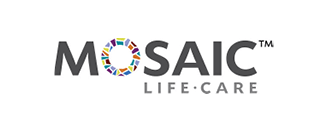A value-based healthcare supply chain operates under new incentives that require a reimagining of supply chain strategy and technologies.
Introduction
Value-based care is reshaping the foundation of the healthcare system by prioritizing patient health outcomes over traditional fee-for-service models.
With a quadrupling of value-based care investment during the pandemic, health systems are increasingly turning towards these models both to prioritize patient health and to build financial resiliency.
What may be overlooked during this shift is the impact of value-based care on the healthcare supply chain. This includes every step in the process from manufacture to procurement to shipping and beyond.
Not only does value-based care create new incentives for providers to improve quality of care for their patients, but it also encourages health systems and supply chain leaders to envision new strategies to organize, coordinate, and remain accountable to patient outcomes.
Supply chain professionals are tasked with re-evaluating and aligning their processes with the overarching values of value-based care. Proven strategies and advanced technology can facilitate this new approach.
Value-Based Care: An Overview
The Centers for Medicare and Medicaid Services (CMS) defines value-based care as a healthcare delivery model focused on quality of care, provider performance, and patient experience.
Value-based care emphasizes a more integrated approach wherein providers coordinate with each other, the patient, and across the health system to improve patient outcomes.
Importantly, value-based care also serves as a payment model for hospitals and physicians. In a value-based agreement, providers receive reimbursement for demonstrating improved patient outcomes.
In other words, the “value” of a value-based care model is health outcomes relative to the cost of care. Value-based models differ from traditional fee-for-service models where pay is based on the number of services delivered.
How Value-Based Care Impacts the Healthcare Supply Chain
Under value-based care, providers are incentivized to increase the value of their services rather than just the volume of services they provide. This fundamental shift in care delivery reshapes not only clinicians’ priorities, but ripples throughout the supply chain as well.
The value-based healthcare supply chain encourages leaders to broaden their focus beyond cost reduction. Instead, it places more emphasis on increasing the overall value of their operations. This includes considering factors like operational efficiency, product quality, and patient outcomes during the decision-making process.
For example, a common strategy for supply chain leaders facing budget constraints is to simply choose cheaper products. However, when evaluating these purchases from a value-based perspective, it’s important to consider the quality of the product. Factors like quality and clinical efficacy can influence patient outcomes and therefore costs in the long term.
While one product may be less expensive, it may have less clinical efficacy than its pricier counterpart. In a value-based model, this can lead to worse long-term health outcomes and less reimbursement for the health system. By investing up-front in better-quality products, supply chain leaders can mitigate more substantial costs down the road.
Collaboration is crucial to success in a value-based system. For example, working with clinical teams to source evidence-based products can position supply chain leaders to support better patient outcomes. Collaboration with suppliers further incentivizes industry alignment with value-based goals.
The Role of Technology in the Value-Based Healthcare Supply Chain
Aligning supply chain operations to achieve value-based initiatives is an incremental process that technology can facilitate.
Under a healthcare model that prioritizes patient outcomes, three technology components will be key for supply chain partners: Data analytics, data integration, and collaborative tools.
Data Analytics
Access to data can allow supply chain leaders to make informed decisions that align with value-based needs.
For example, analysis of both clinical and operational data can uncover the true cost, utilization, and outcomes associated with a given product, allowing supply chain leaders to prioritize and standardize the better-performing ones.
Data Integration
The insights within the vast amount of data in healthcare are typically locked up by a lack of proper integration.
Technology solutions can centralize data from ERPs and EHRS, granting supply chain leaders more visibility and illuminating actionable steps for improvement.
Collaborative Tools
Collaboration is imperative under value-based care models to align on the common goal of improved patient outcomes.
As such, supply chain leaders can use technological tools that connect them to suppliers and providers and facilitate collaboration on procurement, shipping, and resource management.
Embracing the Era of the Value-Based Healthcare Supply Chain
The impact of value-based care on the clinical supply chain is often understated yet critical to this model’s success.
With new incentives to promote quality of care, supply chain leaders must work together within the greater healthcare ecosystem to achieve better patient outcomes. Technological tools can make the job easier by centralizing and analyzing data while boosting collaboration.
About VPL
We modernize clinical supply chains to support healthier patients. Our technology-driven solutions and consultative customer experience empower health systems and outpatient pharmacies to build smarter, more resilient supply chains. With over 700 hospitals and a 97% customer retention rate, we’re trusted to deliver transparency, cost savings, and peace of mind.
































